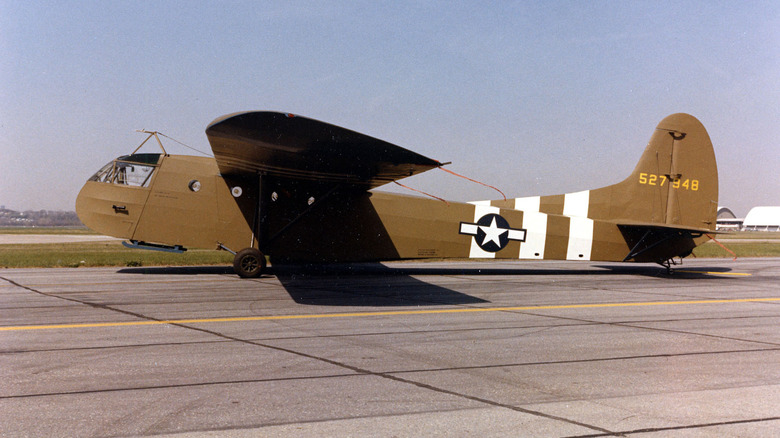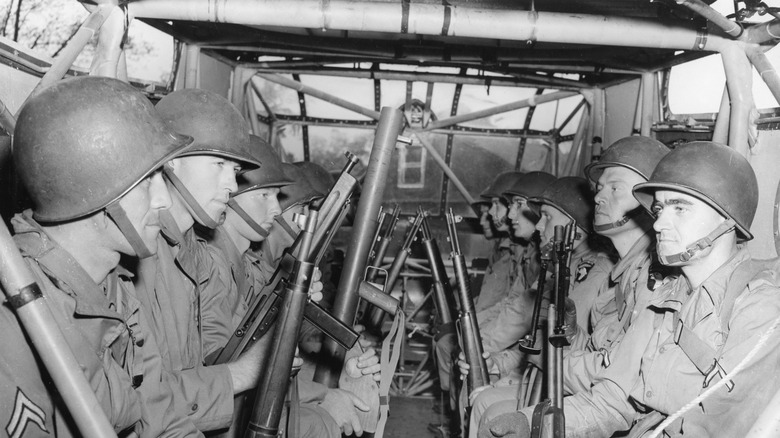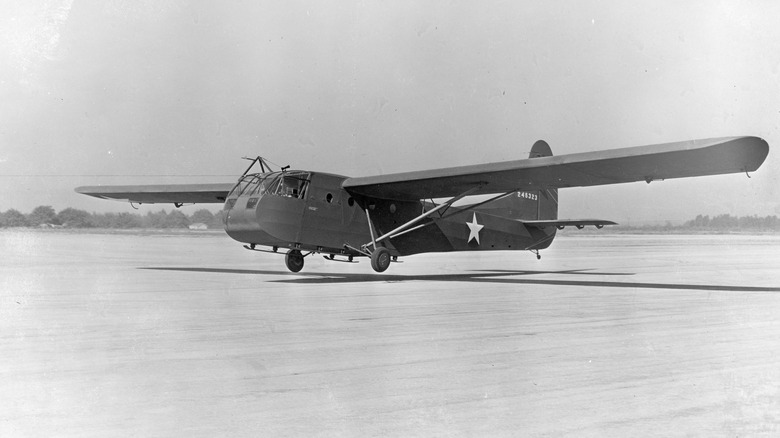US Army Gliders And Their Importance In WWII
With the German invasion of France that began in May 1940, the full might of the combined arms of the German military and its tank-centric Blitzkrieg strategy hit numerous Allied countries. One such country was Belgium and in particular, the strategically important Fort Eben-Emael. Considered "impregnable," the fort fell in 20 minutes to 78 German paratroopers who had landed inside its walls thanks to 11 DFS 230 assault gliders. The German success with gliders silently landing troops behind enemy lines shocked the Allies into action. The U.S. and Great Britain would lead the Allied effort in the development and use of combat gliders for the remainder of the war.
The U.S. military for its part, after prototype testing at Wright Field near Dayton, Ohio, settled on the Waco CG-4A glider. The glider was just under 50 feet in length with a wingspan of around 84 feet. It was capable of delivering 13 fully equipped infantrymen and crewed by two pilots. The pilots for glider units, with the first eventually being designated the 88th Glider Infantry Regiment, were involuntarily volunteered from other units. Glider pilots for these units were trained in Missouri, Nebraska, and North Dakota, and over 10,000 were trained and assigned to one of 11 glider regiments by the end of the war.
Simple and effective?
Combat duty for glider pilots and its occupants was extremely dangerous. In an interview posted to the U.S Army website, retired WWII glider pilot Lt. Col. Al Hulstrunk noted that "You would think you were in a popcorn machine — you would hear pop, pop, pop, and you would say, 'Oh, they are shooting at us.' It was the bullets coming through the tightly stretched fabric making the popping sounds." Typically constructed of wood and fabric, these early stealth crafts could deliver troops, artillery, or equipment to a specific area with little noise. The U.S. would put these glider units to the test, beginning with Operation Husky in July 1943.
A joint American-British operation, Husky was meant to deliver 1,600 troops on the east coast of Sicily to capture specific targets before the main Allied invasion began. The force consisted of 144 gliders, with the majority consisting of American CG-4As and the rest being the British Airspeed Horsa. Inadequately trained C-47 transport pilots, combined with lack of night flying experience by British glider pilots (who were piloting all of the gliders in the attack), doomed the entire operation. Combat gliders would fulfill more of their potential however in Burma (now known as Myanmar). Ordered by President Roosevelt in March 1944 to supply the Chindit irregular troops fighting the Japanese in an attempt to open the Burma Road, the operation would successfully deliver needed supplies and over 9,000 Chindit troops behind enemy lines. Though many gliders failed to reach their targets in the operation, the operation was ultimately a success.
Gliding into history
The last two years of the war bore witness to numerous glider operations, which included successes and terrific failures. Gliders were used to successfully land troops up to 10 miles behind enemy lines east of Utah beach in support of D-Day in June 1944. Later, beginning on September 17, 1944, gliders flew 300 miles to their landing zones in support of Operation Market-Garden. The glider operation was successful in delivering its airborne troops, though the operation itself proved to be a disaster due to bad weather effecting resupply and larger-than-expected numbers of German troops.
The Battle of the Bulge in December 1944 saw 61 gliders provide critical supplies to the 101st Airborne Division at Bastogne, Belgium over several days. The largest combat glider operation was in Operation Varsity on March 24, 1945. Over 900 gliders carried the American 17th Airborne Division and the British 6th Airborne Division into Germany in support of Gen. Bernard Montgomery's advance into the country. The loss of gliders and men during the operation was the largest of the entire, as flying in the daytime made it easier for German anti-aircraft gunners. Losses aside, over 21,000 paratroopers and glider troops landed on 10 zones in support of the drive into Germany.
The military ultimately built over 14,000 gliders by the war's end, and the program was cancelled not long after. Though having mixed results, the combat glider, along with its pilots and troops proved the value of delivering troops and military assets over and behind enemy lines. They paved the way for the introduction of the helicopter, which would shoulder that burden going forward.


